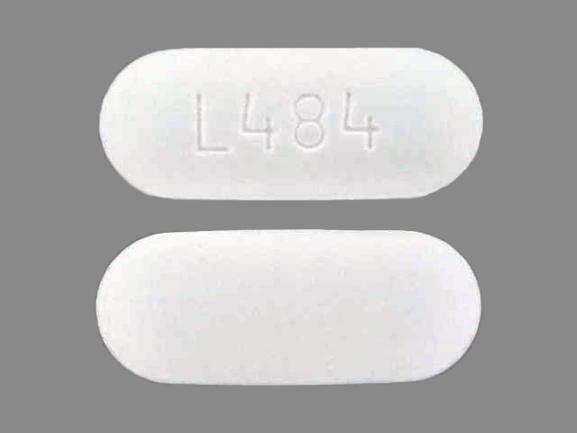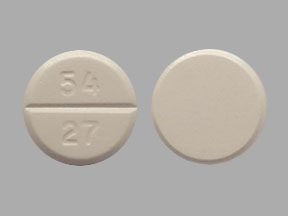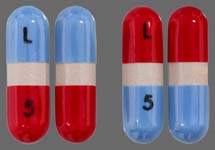Acetaminophen
| Generic Name | Acetaminophen |
| Brand Names | Tylenol, Feverall, Acephen, Neopap, Ofirmev, Panadol, MapapTempra Quicklets, Tycolene, Acephen, Aminophen, Feverall, Pyrecot, Febrol, Genapap, Aurophen, Tactinal, Vitapap, Anacin Af, Silapap, Pharbetol, M-Pap |
| Ingredients | Acetaminophen |
| Drug Class | Analgesic and Antipyretic |
| Dosage Forms | Infant drop (50mg/1.25 mL,80 mg/ 0.8 mL), Intravenous Injection (160 mg/ mL), Dissolved Packets (160 mg/ powder pack); oral suspension (160 mg/5 mL), oral tablet (325 mg; 500 mg; 600 mg; 1000 mg), oral tablet chewable (160 mg; 80 mg), Suppository (Rectal use only) |
| Controlled Status | Not a Controlled Substance |
| Availability | Prescription Medication and Over the Counter |
| Brand Name with Combination Products | Dayquil (Containing Acetaminophen, Dextromethorphan, Pseudoephedrine)Nyquil Cold/Flu Relief (Containing Acetaminophen, Dextromethorphan, Doxylamine)Percocet (Containing Acetaminophen, Oxycodone) |
What is Acetaminophen?
Acetaminophen is classified as an analgesic and antipyretic drug. It falls under the category of pain relievers and fever reducers, making it a staple in many medicine cabinets. Acetaminophen is a widely used over-the-counter (OTC) medication and prescription product.
Acetaminophen is primarily used to alleviate pain and reduce fever. Acetaminophen operates primarily in the brain, specifically in the hypothalamus, where it influences temperature regulation. It’s thought to inhibit the production of prostaglandins chemicals that trigger pain and fever responses in the body. It’s an effective choice for minor aches, headaches, and discomfort associated with the common cold or flu.
Common side effects may include nausea, allergic reactions, or liver damage if taken in excessive doses. It’s crucial to follow dosage instructions carefully.
Acetaminophen can be found in various over-the-counter combination medications, often paired with other active ingredients. These combinations are available in brands such as Actifed, Alka-Seltzer Plus Liquid Gels, Cepacol, Contac, Coricidin, Dayquil, Dimetapp, Dristan, Excedrin, Feverall, Liquiprin, Midol, Nyquil, Panadol, Robitussin Singlet, Sinutab, Sudafed, Theraflu, Triaminic, Vanquish, Vicks, and Zicam.
Acetaminophen is also an ingredient in various prescription combination medications, which may include Butalbital, Endocet, Fioricet, Hycotab, Hydrocet, Hydrocodone bitartrate, Lortab, Percocet, Phenaphen, Sedapap, Tapanol, Tylenol with codeine, Tylox, Ultracet, Vicodin, and Zydone.
What is Acetaminophen Used for?
Acetaminophen is primarily used as an analgesic (pain reliever), its ability to lower elevated body temperatures serves as an essential secondary function, providing relief for individuals suffering from fever-associated discomfort.
Its primary use is pain relief, making it a popular choice for addressing various forms of discomfort, including colds or flu, headache, muscle aches, arthritis, menstrual cramps, toothache, back pain, reactions to vaccinations (shots) and muscle ache, osteoarthritis and joint pain, surgical and postoperative pain and pain associated with conditions like cancer.
How Does Acetaminophen Work?
Acetaminophen’s ability to reduce fever is likely linked to its direct impact on the heat-regulating centers in the brain, which leads to peripheral vasodilation, increased sweating and the dissipation of body heat.
Acetaminophen is grouped with NSAIDs (nonsteroidal anti-inflammatory drugs) because it can inhibit two isoforms of cyclooxygenase, known as COX-1 and COX-2, both of which play a role in the synthesis of prostaglandins (PG). Prostaglandins are responsible for triggering the sensation of pain.
Acetaminophen Dosage
The dosing recommendations for Acetaminophen, available in various forms, are dependent on factors such as body weight and age.
The various available forms and potencies of drug dosages include the following: Acetaminophen chewable tablets (80 mg, 100 mg, 160 mg), acetaminophen tablets (325 mg, 500 mg, 600 mg, 1000 mg), oral suspension (160 mg/5 mL), Acetaminophen drops (50 mg/1.25 mL, 80 mg/0.8 mL), Acetaminophen Intravenous (IV) Injection (160 mg/mL), Acetaminophen Dissolvable Packets (160mg /Powder Pack), Acetaminophen Suppository (Rectal Use Only)(80 mg, 120 mg, 325 mg, 650 mg).
For more details about the (Dosage of Acetaminophen)
For Adults
For adults, the typical recommended dosage for managing fever and alleviating pain. On the other hand, when it comes to pediatric dosages, the recommended dosing is for fever and pain. It’s important to follow these guidelines carefully to ensure the appropriate treatment for each condition.
In certain cases, dose adjustments may be necessary to accommodate individuals with specific medical conditions. Renal dose adjustments refer to modifications in the prescribed dosage for patients with kidney-related issues, while liver dose adjustments involve adapting the dose for individuals with liver-related conditions. These adjustments are essential to ensure that the medication is both effective and safe for patients with these specific health concerns. Always consult a healthcare professional to determine the appropriate dose adjustments for your condition.
The recommended dosing interval is every 4 to 6 hours as required, with a limit of four doses in a 24-hour timeframe, and the length of treatment should be decided by a healthcare provider.
In the case of adults, the maximum daily dosage is 4000 mg/day (tablet) or 80 ml (oral suspension) and the duration of treatment is at the discretion of a healthcare professional. As for children, the maximum daily dose depends on their age, weight and dosage form and the course duration should be determined by a healthcare professional.
What are the Side Effects of Acetaminophen?
Acetaminophen, a widely used over-the-counter pain reliever, can lead to various side effects that individuals should be mindful of. Common side effects, more prevalent in adults than in pediatric patients, encompass nausea, headache, vomiting, constipation, itching, diarrhea, sweating, dizziness, and tiredness. Dermatologic reactions are also possible.
On the more serious end, allergic reactions might manifest as hives, rash, skin blister formation, peeling skin, swelling of the lips or tongue, and difficulty breathing. Additionally, acetaminophen can potentially cause liver damage, signified by symptoms such as abdominal swelling, jaundice (yellowing of the skin or eyes), confusion, and dark or brown urine. It’s crucial to be aware of these side effects and seek medical attention if any concerning symptoms arise.
Acetaminophen side effects (For more details)
Contact your healthcare provider for guidance regarding any potential side effects. You can also report side effects to the U.S. Food and Drug Administration (FDA) by calling 1-800-FDA-1088.
What Happens if I Miss a Dose of Acetaminophen?
If you miss a dose of your medication, take it as soon as you can, but if your next scheduled dose is approaching, skip the missed one to avoid double dosing, which can lead to an overdose or side effects.
What Happens if I Overdose Acetaminophen?
In the event of an accidental acetaminophen overdose, signs and symptoms to watch for may include:
- Diarrhea
- Increased Sweating
- Loss of Appetite
- Nausea
- Vomiting
- Stomach Cramps or Pain
- Swelling
- Tenderness in the Upper Abdomen
In case of a medical emergency, please seek immediate medical assistance or contact the Poison Help Line at 1-800-222-1222. Information is also available online at poisonhelp.org
Nevertheless, if you are experiencing severe symptoms, please do not hesitate to dial 911 (or your Local Emergency Number) immediately or proceed to the nearest emergency room for immediate medical attention. Your safety and well-being are paramount.
Pros and Cons of Acetaminophen
Pros
- Effective in reducing fever and minor aches and pains.
- Associated with minor risks for most people. Safe for use by children and adults.
- Available in various forms (tablets, liquid, powder, suppository etc.)
- Available in a low-cost generic version and over the counter.
- Suitable for people with severe renal impairment or kidney disease.
- Less likely to cause upset stomach, bleeding, ulcers, bruising compared to NSAIDs.
Cons
- Does not reduce swelling and inflammation.
- May not work well for moderate to severe pain.
- Not safe for individuals with hepatic impairment or heavy alcohol use.
- Risk of overdose when found in combination medications.
Interaction Between Acetaminophen and Other Drugs
- Phenothiazines
- Phenobarbital
- Alcohol
- Benzocaine
- Benzydamine
- Busulfan
- Pramoxine
- Prilocaine
- Primidone
- Warfarin
- Phenytoin (Dilantin)
- Carbamazepine
- Chloramphenicol
- Dapsone
- Dasatinib
- Fosphenytoin
- Probenecid
- Rifampin
- Carbamazepine (Tegretol)
- Coumadin
- Imatinib
- Ipilimumab
- Isoniazid
- Lamotrigine
- Lidocaine
- Sorafenib
- Tetracaine
- Vaccines
What are the Risks and Warnings for Acetaminophen?
Acetaminophen and Allergy Warning
Acetaminophen has the potential to induce severe skin reactions, which may manifest as symptoms such as skin reddening, the formation of blisters, or the development of a rash. If you experience any skin reaction, it is imperative to discontinue its use immediately and promptly seek medical assistance.
Acetaminophen and Alcohol Warning
Drinking significant quantities of alcohol while using acetaminophen may not be safe. In particular, consuming more than 3 alcoholic beverages per day can elevate the risk of liver damage as a potential side effect of the medication.
If you consume alcohol, it is advisable to consult with your doctor before taking acetaminophen. Your doctor can provide guidance on whether there is a safe amount of alcohol that can be consumed while using the medication.
Acetaminophen and Birth Control Needs
If you have concerns about the possibility of becoming pregnant while using acetaminophen, it’s important to have a conversation with your doctor. If you or your partner are sexually active and there is a potential for pregnancy, your doctor can provide guidance on suitable birth control options to consider while you are taking acetaminophen.
Warning with People with Certain Health Conditions
Caution is paramount for individuals with specific health conditions, as certain factors can significantly impact their well-being and require tailored care and attention.
Liver Disease, Damage and Risk Factors
Taking an excessive amount of acetaminophen can lead to severe and potentially life-threatening liver damage. If you have a history of liver problems, it’s crucial to consult your healthcare provider before using acetaminophen because it can increase liver damage.
Warning with other Groups
Understanding the potential interactions and precautions when using acetaminophen in conjunction with other groups of individuals is vital to ensure safe and effective pain relief and management.
Acetaminophen and Breastfeeding
Acetaminophen is generally considered safe for use during breastfeeding. Nevertheless, it is advisable to consult with your doctor or pharmacist before taking acetaminophen while breastfeeding.
Acetaminophen and Pregnancy
As per the American College of Obstetricians and Gynecologists (ACOG), acetaminophen is typically regarded as safe for use during pregnancy.
However, it’s important to note that no medication can be guaranted to be completely safe during pregnancy. If you are currently pregnant or planning to become pregnant, it is advisable to have a discussion with your doctor or pharmacist before using acetaminophen.
Expiration, Storage and Disposal
Do not use your Acetaminophen medication after the expiration date indicated on the packaging.
For acetaminophen oral liquid, it should be stored within the temperature range of 59°F to 86°F (15°C to 30°C). Avoid placing it in the freezer and be sure to keep it away from direct light.
Acetaminophen chewable tablets and oral tablets can be stored at around 77°F (25°C). If you need to temporarily store them while traveling, a temperature range of 59°F to 86°F (15°C to 30°C) is acceptable. However, refrain from storing them in places with high humidity.
Acetaminophen oral capsules should be stored at a temperature between 68°F and 77°F (20°C to 25°C), while oral powder can be kept at room temperature.
Ensure that all forms of acetaminophen in oral preparations are stored in a tightly sealed container. Avoid storing them in areas prone to dampness or moisture, such as bathrooms.
Images
What Are the Alternatives of Acetaminophen?
FAQs
In the United States, the medication known as “Paracetamol” is referred to as “Acetaminophen.” Acetaminophen is commonly used to alleviate mild-to-moderate pain, as well as to reduce fever and relieve headaches. It is readily available over-the-counter under various brand names such as Tylenol, Mapap, or Panadol, and it is also accessible as generic versions and store-specific brands. While the names and available products may differ between countries, it’s important to note that there are no significant differences in the chemical composition or therapeutic uses of acetaminophen and paracetamol.
Acetaminophen is not classified as an NSAID (nonsteroidal anti-inflammatory drug), which is a distinct category of pain relievers. NSAIDs include medications such as Ibuprofen, Aspirin and Naproxen sodium. Acetaminophen differs from NSAIDs in its mechanism of action and its effects on pain and inflammation.
Acetaminophen is offered in various forms including caplets, liquid gels, and dissolve packs, catering to those who may prefer not to swallow pills. Additionally, for children it is available in liquid form, chewable tablets, and dissolve packs, providing options suitable for various age groups and preferences. It’s essential to use these products responsibly and follow the recommended dosages to prevent excessive intake of acetaminophen, which can lead to potential health risks.
Yes, acetaminophen is the same as Tylenol. Acetaminophen serves as the generic name for the well-known brand-name medication Tylenol. Tylenol exclusively contains acetaminophen as its active ingredient.
Acetaminophen primarily targets the brain, whereas ibuprofen has a dual action, affecting both the brain and the entire body. Consequently, acetaminophen primarily alleviates pain and fever, while ibuprofen offers the additional advantage of reducing inflammation and swelling at the injury site.
Acetaminophen and paracetamol are identical medications. There are no substantial differences in their chemical structure or recommended uses. In the United States and Japan, the medication is known as acetaminophen, while in Europe and most other parts of the world, it is called paracetamol.
Disclaimer
The information provided on this website is intended for general informational purposes only. Always seek the advice of your physician or other qualified health provider with any questions you may have regarding a medical condition. Never disregard professional medical advice or delay in seeking it because of something you have read on this website.
Reliance on any information provided here is solely at your own risk. The content is not intended to be a substitute for professional medical advice, diagnosis, or treatment.
The website’s content, including text, graphics, images, and other materials, is for informational purposes only.
The website’s content is provided “as is,” and the website owner and authors make no representations or warranties, expressed or implied, as to the accuracy, completeness, or suitability of the information provided. The website owner and authors shall not be liable for any direct, indirect, incidental, consequential, or punitive damages arising out of the use of the website’s information.
By using this website, make sure you agree to these terms and conditions.






